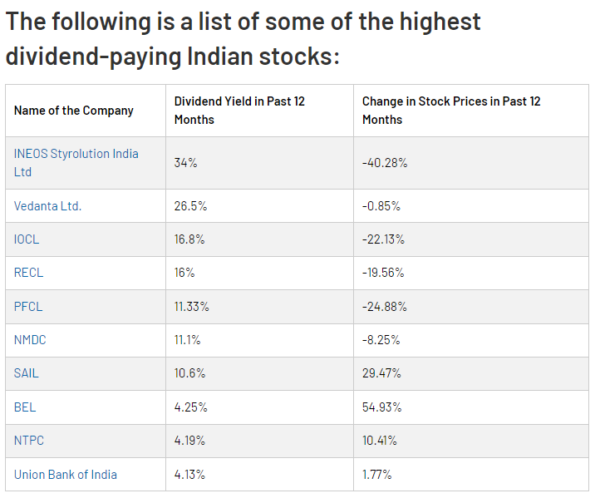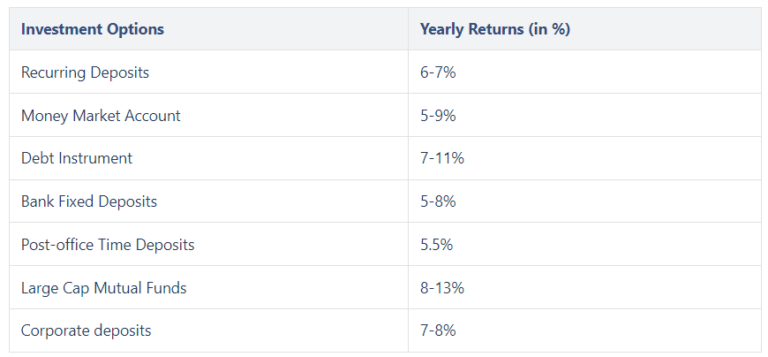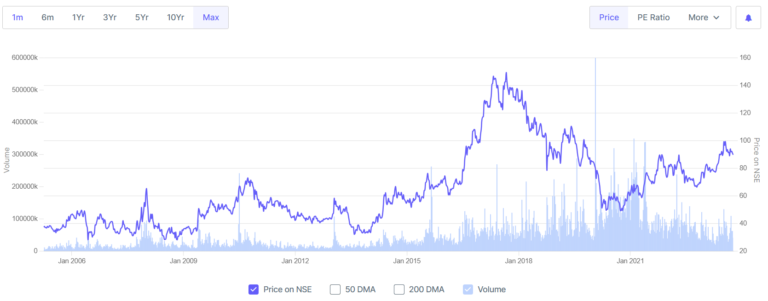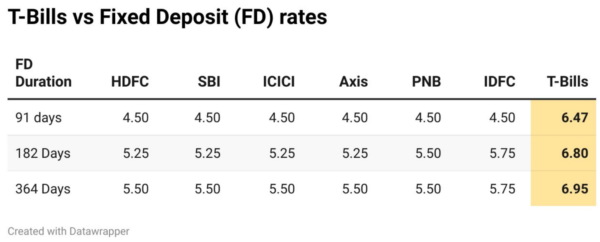How to make regular income? Building a Steady Dividend Income

Introduction:
Many individuals aspire to secure their financial future through dividend income, often opting for either dividend-paying stocks or allocating funds into fixed deposits, recurring deposits, debt mutual funds, or government securities.
For example, this was the list of some of the highest dividend-paying stocks in India [1]:

Alternatively, they would invest their money in other instruments such as debt, bank deposits, government schemes etc [2].

However, a pivotal factor often underestimated is the element of timing.
What This Blog Will Cover:
In this comprehensive guide to creating a reliable dividend income stream, we will address the following key points:
- Understanding the Two Paths to Dividend Income
- Case Study highlighting the Timing Issue
- Avoiding the Timing Trap
- Where should you Invest your Money?
- Should you Buy Dividend Paying Stocks?
- How to find the optimal time to Invest in these assets
Understanding the Two Paths to Dividend Income
When embarking on the quest for a dependable dividend income stream, it’s vital to comprehend the two primary avenues: dividend-paying stocks and fixed-income investments like fixed deposits, recurring deposits, debt mutual funds, and government securities.
Each option carries its own set of advantages and drawbacks. However, one critical issue looms large over both – the timing factor.
The Timing Issue: A Case Study
To illustrate the timing challenge, consider the example of IOC (Indian Oil Corporation Limited), a venerable dividend-paying stock. In the previous year, IOC distributed a consistent dividend of around 12 rupees per share. Now, envision two investors: one who acquired IOC shares at 65 rupees and another at 90 rupees [3].

The first investor, who entered at 65 rupees, currently enjoys a stock price of approximately 72 rupees, resulting in a profit of 7 rupees, complemented by the 12 rupees in dividends, tallying up to 19 rupees in gains.
However, the second investor, who purchased at 90 rupees, faces a loss of 18 rupees, even with the same 12 rupees in dividends.
This scenario underscores the timing issue – the stock price’s fluctuations can significantly impact your overall returns, regardless of constant dividend payments
Avoiding the Timing Trap
To construct a robust dividend income plan, you must grapple with the timing aspect, irrespective of your chosen investment route. In this blog, we’ll explore two primary options: fixed deposits (FDs) and government savings bonds.
Option 1: Fixed Deposits (FDs)
Fixed deposits offer returns that are relatively immune to market volatility, making them an appealing choice for crafting a steady income stream reminiscent of dividends.
The opportune moment to venture into FDs is when the general inflation rate remains lower than the offered interest rate.
The target Inflation in India is between 4 – 6% [4]

Currently the inflation rate in India sits at around 6.5% as per the chart below [5]

Therefore, if the situation figures where the FD interest rate is more than the target inflation rate then that would be a good time to invest in a Fixed Deposit.
When the inflation rates come down, it is likely that the FD rate will beat Inflation if you do it for 2 years.
The chart below shows how the FD rates have changed in the last 20 years [6].

Presently, Indian banks are enticing investors with favorable rates, often hovering between 7-9%.
Nonetheless, a critical caveat is to meticulously assess the credit quality of the bank offering these lucrative rates.
Option 2: Bonds
Bonds encompass a broader category, including various fixed-income assets like Government Securities (G-Secs) and Treasury Bills (T-Bills), Liquid Debt Funds, and Debt Mutual Funds. Each of these has its own characteristics and considerations for timing.
Government Securities (G-Secs) and Treasury Bills (T-Bills)
Government bonds, such as G-Secs and T-Bills, are considered low-risk investments. G-Secs typically have longer maturities, while T-Bills have shorter ones.
The timing factor plays a pivotal role here. Government bonds should feature in your portfolio if you harbor a long-term investment horizon and anticipate moderate inflation levels.
Investing in government bonds underscores the paramount importance of safeguarding your principal investment, with the caveat that your funds remain locked in until the bond matures.
Liquid Debt Funds
Liquid Debt Funds are a type of mutual fund that primarily invests in short-term debt securities. They offer a more liquid alternative to individual bonds.
The optimal time to invest in liquid debt funds is when you anticipate the need for liquidity in the short term. They are suitable for investors who want to balance safety and liquidity.
Debt Mutual Funds
Debt Mutual Funds provide exposure to a diversified portfolio of debt securities. The timing for these funds depends on your investment horizon and risk tolerance.
Where Should You Invest Your Money?
Firstly, let’s compare T-Bills with Fixed Deposits.
As per the chart below, T-Bills generally generate slightly higher returns as compared to Fixed Deposits [7].

In terms of liquidity, Fixed Deposits top the chart.
There are subsequent secondary market liquidity issues with T-Bills. So avoid purchasing T-bills if you don’t plan on holding till maturity.
Liquid Debt Funds over the last few years have given less than 5% CAGR (Compound Annual Growth Rate).
This is because of a concept called the Inverted Yield Curve.
An inverted yield curve is when short-term interest rates are higher than long-term interest rates.
So therefore it makes more sense right now to invest in Short Term Debt over Long Term Debts.
When the Interest Rates are cut, that is when you can rotate your money to Debt Mutual Funds.
Avoid Purchasing Hybrid Mutual Funds. They have 2 main issues:
- High Expense Ratio
- Lack of Transparency and Control
Should you Buy Dividend Paying Stocks
Avoid buying too many dividend paying stocks given the current macro circumstances.
The credit right now is drying up in the economy. There is a lack of credit flow in the economy.
Dividends are normally paid out when the company has excess profit or does not want to reinvest the money back into the company.
So given the current stance, it does not make sense to invest in High Dividend Paying companies that do not know how to accelerate their growth.
If you want to purchase Dividend Paying stocks for the Long Term, keep these points in mind:
● Trade the Cycle
- Consider purchasing the stock only when it’s in the lower end of its cycle.
- Avoid purchasing at all time highs.
● Buy ones that are discounted and have expansion opportunities
● Find stocks with good Dividend history and are at a right buying level
How to find the Optimal time to Invest
Determining the optimal moment to invest in government bonds necessitates vigilant monitoring of two pivotal factors: general inflation levels and prevailing interest rates.
Historically, when inflation surges, central banks often maintain elevated interest rates to combat it. Conversely, reduced inflation frequently leads to a lowering of interest rates.
When you invest in bonds, your fixed rate of return remains constant. Nevertheless, if interest rates drop, new bonds issued in the future might offer lower returns, potentially augmenting the value of your existing bonds.
For those inclined towards shorter investment durations, FDs may prove to be the more suitable option due to their inherent stability.
On the flip side, investors with longer-term goals who can commit to the full bond tenure may find government bonds more attractive due to their potentially superior returns.
It’s essential to bear in mind that FDs offer a guaranteed fixed return with no surprises, whereas government bonds can exhibit volatility if liquidated prematurely.
The right choice hinges on your individual circumstances, financial objectives, and tolerance for potential market fluctuations.
If you are a new stock market investor or are looking for advanced techniques with a focus on better returns, check out this course on Stock Market Investing which covers all the aspects from Fundamental Analysis to key concepts like Macroeconomics and Wealth building.
If you are a serious investor and are looking for advanced techniques with a focus on better returns, join my Youtube Community where I give live and timely updates on the Stock Market
Conclusion
Building a steady stream of dividend income requires thoughtful consideration of the timing factor, regardless of your chosen investment avenue. Fixed deposits offer stability, making them ideal for short-term investors, while government bonds provide attractive returns for those with long-term financial goals.
Ultimately, the right investment choice depends on your unique circumstances and objectives. The key takeaway is to approach dividend income with a clear plan, considering both the current economic conditions and your individual financial goals. By doing so, you’ll be better equipped to navigate the intricacies of dividend income and secure your financial future.
- Two primary paths to create dividend income: dividend-paying stocks and fixed-income investments like fixed deposits, recurring deposits, debt mutual funds, and government securities.
- Timing is a crucial factor that impacts the success of these investments.
- Case study with Indian Oil Corporation (IOC) stock highlights how timing affects returns despite constant dividend payments.
Options for avoiding the timing trap:
– Option 1: Fixed Deposits (FDs) – invest when FD interest rate exceeds the target inflation rate.
– Option 2: Bonds – consider government securities (G-Secs) and Treasury Bills (T-Bills) for long-term investments, liquid debt funds for short-term liquidity needs, and debt mutual funds based on your investment horizon and risk tolerance.
- Comparison of T-Bills and Fixed Deposits in terms of returns and liquidity.
- Recommendation to avoid purchasing hybrid mutual funds due to high expense ratios and lack of transparency.
- Caution against investing in too many dividend-paying stocks, given current economic circumstances.
- Tips for buying dividend-paying stocks for the long term, including considering the stock’s cycle, avoiding all-time highs, and assessing dividend history.
- How to find the optimal time to invest in government bonds, considering inflation levels and prevailing interest rates.
- Choice between FDs and government bonds depends on individual circumstances, financial goals, and tolerance for market fluctuations.
- Building a steady dividend income requires careful consideration of timing and aligning your investments with your financial objectives.
[1] https://www.angelone.in/blog/best-highest-dividend-paying-stocks-in-india
[2] https://www.policybazaar.com/life-insurance/investment-plans/articles/top-10-short-term-investment-options/
[3] https://www.screener.in/company/IOC/consolidated/
[4] https://www.drishtiias.com/sambhav-daily-answer-writing-practice/papers/2023/inflation-targeting-advantages-limitations-adopting-inflation-monetary-policy-framework-reserve-bank-india-achieving-macroeconomic-stability-free-agreements-gspaper3-economy
[5] https://tradingeconomics.com/india/inflation-cpi
[6] https://www.bajajfinservmarkets.in/fixed-deposit/what-is-the-history-of-fixed-deposits-through-time.html
[7] https://tradingqna.com/t/t-bill-rates-are-nearly-2-higher-than-fd-rates/138954
Ever wondered what we get in return for the taxes we pay in India. Whether the Tax Structure is TOXIC? Check out our Blog post on HEAVY TAXES, But we get NOTHING in return





